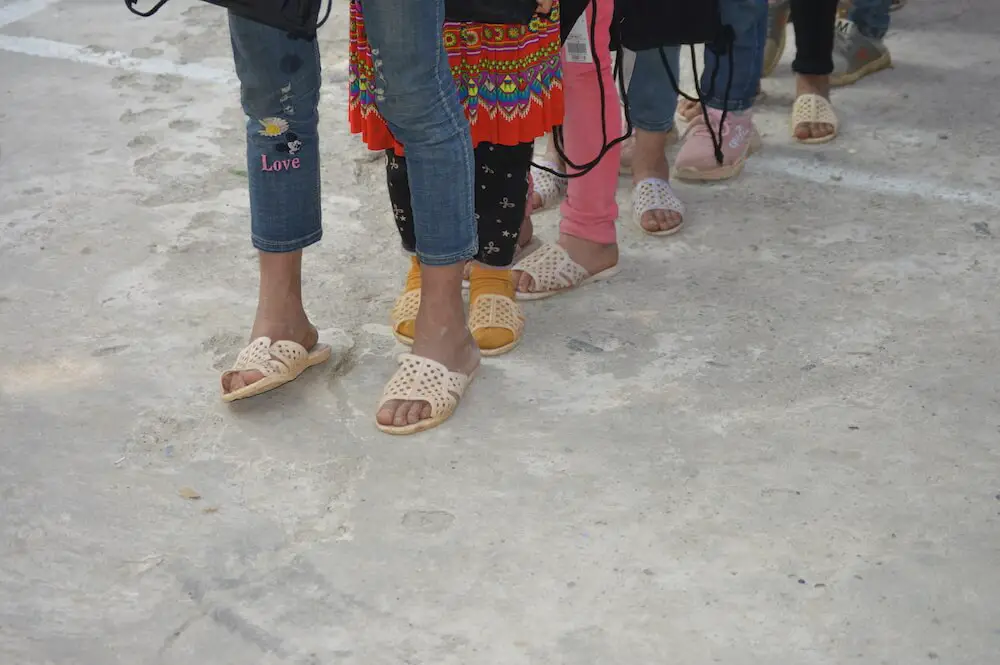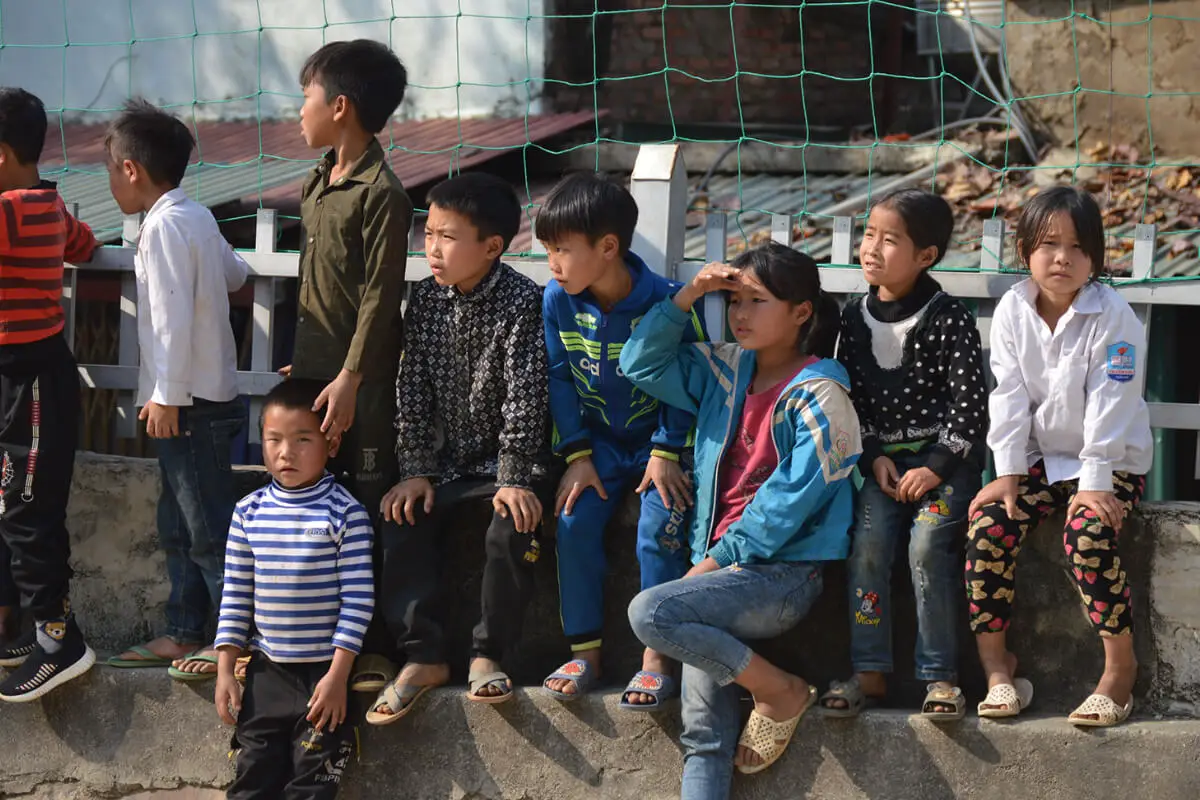This week some good friends of mine, Ethos, a travel company in Sapa, posted a story on Facebook about a Hmong hill tribe family they visited in North Vietnam. The father of this family was addicted to opium and heroin.
Opium is a highly addictive drug that is produced from the poppy plant. What makes it so dangerous is that opium can be smoked, injected, or taken in pill form. In North Vietnam, Hmong hill tribe families suffer from extreme poverty as one or both parents are addicted to opium and other drugs. This addiction affects the lives of their children.
Table of Contents
- What is Opium?
- Opium Use Among The Hmong
- Effects of Opium Use On Children and Poverty
- Frequently Asked Questions
- Related Content
When we think of Opium, we think of a drug used in places like China hundreds of years ago; in fact, China fought a war with Britain over opium (1839-1842). But opium is a drug that continues to affect the lives of many today.

What is Opium?
For many parts of the world, opium production and use are still a huge problem. Many countries, including Vietnam, have been extremely successful in getting rid of opium poppies, but some unscrupulous people still find a way to grow opium.
The American Drug Enforcement Agency says this about opium:
Opium is a highly addictive non-synthetic narcotic that is extracted from the poppy plant, Papaver somniferum. The opium poppy is the key source for many narcotics, including morphine, codeine, and heroin.
D.E.A
The key here with this definition is that opium is highly addictive opium. But what is also dangerous is that the opium drug can be smoked, injected, or taken in a pill form.
The combination of how opium can be used in many different ways and is highly addictive makes opium a hazardous drug. The use of opium also leads to a high amount of physical and psychological dependence, leading to an overdose.
Opium has been around since 5000 BC. It is originally grown in the Mediterranean region but since then has been cultivated and found in a number of countries around the world including Vietnam.
Opium and heroin were among the drugs of choice that many American soldiers sampled during the Vietnam war era (1954-1975). It is estimated that about 50% of all American soldiers came back addicted or having used some drugs; opium was the drug that many of them used. Unfortunately, for many of these same soldiers, this led them to a life of drug addiction.
Opium Use Among The Hmong
Opium is a drug that is found in Vietnam. In fact, you can go into some hill tribe areas in Myanmar, Thailand, Laos, and Vietnam and find Hmong hill tribes who are smoking and addicted to opium. Among many of the Hmong, they have been growing and using opium for a long time.
In a 1987 Newspaper Article about the Hmong resettling in America, they found that many Hmong were using the US postal service to have opium shipped to them in the United States. This is because many Laotian Hmong farmers grew opium as a cash crop and were also addicted to opium.
In 1987 Dr. Joseph Westermeyer, a professor of psychiatry at the University of Minnesota Hospital and Clinic in Minneapolis, spoke to the Christian Science Monitor Magazine and said this about the Hmong and their use of opium in the United States:
“It’s a serious and growing problem here,” says Dr. Westermeyer. `With opium, the average patient usually comes in eight years after starting to smoke it. We didn’t see appreciable numbers of addicts until 1986, but the epidemic started in 1982.”
The Christian Science Monitor (1987)
About 15,000 Hmong live in the Minneapolis area. Westermeyer has treated more than 100 Hmong opium addicts at the hospital clinic and reviewed reports of opium use in Rhode Island, Illinois, Wisconsin, Minnesota, Iowa, Montana, and California. He says, `The Hmong are trafficking to the Vietnamese and Lao, and the drug is starting to be sold on the street.”
This shows that for many Hmong, the use and growing of drugs such as opium is something that they have been doing for many years. In fact, for many Hmong, the growing of opium was their cash crop; this is why many of these Hmong addicts had parents who were also addicted to the drug and may even have an addiction since they were young.
I have a Laotian Hmong friend who is now a successful lawyer in the United States. When his parents left Laos at the end of the Vietnam War, they spent many months in the Laotian jungles making their way to safety in Thailand. He said as an infant, his mother gave him opium to keep him quiet and from crying so the authorities would not discover them; by the time he was 2 years old, he was addicted to opium.

Effects of Opium Use On Children and Poverty
Today you can find opium addiction in some Hmong households and the hill tribes of North Vietnam. This opium addiction hurts the children of these families in countless ways.
Not only are the parents spending money on opium instead of looking after their children, but they also stop working, so the family gets thrown into dismal poverty.
With the association of our partner Ethos, Project Sprouts delivers winter coats up to North Vietnam. Ethos delivered those coats to a Hmong family whose father was addicted to opium.
This Hmong family lives in a tiny house where 10 people shared three homemade wooden beds. Cooking is done on an open fire, and there is no chimney, so the walls were all black with the soot from the smoke. The children all have runny noses and a chronic cough. The children are not well looked after because of poverty and opium addiction.
Chang, the eldest 12-year-old son, spoke to Ethos about his father’s opium addiction and the harrowing effect it has had on his family; he said:
“For as long as Chang can remember, their father has been addicted to opium and heroin. Chang talked about having few friends because the parents of other children in the village advised their own sons and daughters to stay away from the “bad family.”
Ethos – The Spirit of The community
With tears in his eyes and a quivering voice, he told us that there were two other teenage girls living in the home until mid-2019. A human trafficker approached the family and offered a sum of money to “give the girls better life.” They were sold across the border to China and having received the money, the family never seen or heard from them again.”
These few sentences from this 12-year-old Hmong boy in the mountains of North Vietnam show the harrowing effect opium and heroin addiction have on a family. A father cares more for opium than his children and would even “sell” his daughters to human traffickers for money.
The Vietnamese government has tried to help this situation, but they can only do so much. The children are given free meals when they go to school to have at least one proper nutritious meal a day. The children do not need to pay any school fees, and the government helped build this family a rudimentary house, so they are not homeless.
The children are getting an education and getting fed through the school system. But no government can solve all the problems of a family like this – especially the social dislocation these children feel due to the opium addiction of their father.
Opium addiction hurts children the most. Children who live daily with this kind of poverty – without a proper house, food, clothes, and shoes. These children must also live with the stigmatism of having a father who would rather be on drugs than try to find a way to support his family—a father who cares more for the money than the welfare of his oldest daughters.
At Project Sprouts, we realize that we can not solve all the problems of poverty in a situation like this. But we can seek to make a difference in the lives of needy children by giving them school supplies and encouraging them to continue their education; we can give them winter coats, boots, and blankets to help them stay warm during the cold winter months.
We can also continue to partner with worthy organizations as Ethos to ensure that our donations go to those, like Chang and his siblings, who need them the most.
If you are planning a trip to Sapa Vietnam, we highly recommend contacting Ethos and booking a tour with them. Ethos is an ethical, social impact business focusing on culture, women’s empowerment, and environmental issues. In short, Ethos can help ensure your tourism makes a difference. You can contact Ethos by clicking here.
Project Sprouts would love to have you be a part of our community and help us to help worthy children as this 12-year-old Hmong boy in North Vietnam. We cannot solve all the world’s problems, but we can do our part to help poor kids grow by giving school supplies, winter coats, boots, and other supplies.
You can find out more about Project Sprouts by clicking here or go to our give now page to donate by clicking here. As we are a grassroots organization, all funds go to help those in need.
Frequently Asked Questions
1. What is opium, and how is it produced?
Opium is a highly addictive drug derived from the poppy plant. It is produced by collecting the latex or sap from the opium poppy’s seed pods, which is then processed into various forms for consumption.
2. How is opium used, and what are its different forms?
Opium can be consumed in various ways, including smoking, injection, or as pills. It is essential to understand the different methods of consumption to address its effects.
3. Why is opium addiction a prevalent issue among the Hmong hill tribes in North Vietnam?
Opium addiction is widespread among the Hmong hill tribes due to various socio-economic factors, including limited access to education, healthcare, and economic opportunities, which can lead to drug abuse as a coping mechanism.
4. What are the social and economic consequences of opium addiction in the Hmong hill tribes?
Opium addiction often leads to extreme poverty in these communities, affecting family dynamics and overall well-being. Families may struggle to meet basic needs due to addiction-related issues.
5. How does opium addiction impact the lives of children in Hmong hill tribe families?
Opium addiction within families can have detrimental effects on children’s physical and emotional health, education, and future prospects. It can perpetuate a cycle of poverty and addiction.
6. Are there any efforts to address opium addiction within the Hmong hill tribes?
Various organizations and government initiatives are working to combat opium addiction in the Hmong hill tribes through awareness campaigns, rehabilitation programs, and support for economic development.
7. What challenges do these efforts face in addressing opium addiction in remote hill tribe communities?
The challenges include limited access to healthcare and addiction treatment services, language barriers, and the remote and mountainous terrain that makes outreach and support difficult.
8. Are there any alternative livelihood options being introduced to reduce reliance on opium cultivation?
Yes, some initiatives focus on providing alternative sources of income, such as sustainable agriculture, handicrafts, and tourism, to reduce the dependence on opium cultivation.
9. How can individuals and organizations contribute to helping the Hmong hill tribes overcome opium addiction and poverty?
People can support efforts through donations, volunteering, or purchasing products made by these communities. Additionally, raising awareness about the issue can also make a significant impact.
10. What long-term strategies are needed to address the complex issue of opium addiction and poverty among the Hmong hill tribes in North Vietnam?
Long-term strategies should include comprehensive education, healthcare, and economic development initiatives tailored to the specific needs of these communities, with a focus on breaking the cycle of addiction and poverty.
Related Content
Does Vietnam Have A Good Education System?
Vietnam has a good education system, but some things need to be changed or adjusted. Sometimes, too much theory without practical knowledge or experience in learning in our education system has led to some mistakes during teaching and training students in Vietnam.
You can learn more by reading Does Vietnam Have A Good Education System? by clicking here.
What Are Some Important Facts About Vietnam’s Education System?
Being raised in a Vietnamese household gives me a sense of education’s importance from a young age. A repeated daily routine that only consisted of at least nine studying hours is done while assuming that I would be successful in the future if my grades were high.
Vietnam’s education system has various aspects that need to be improved, such as poor students’ mental health, grade inflation, old-fashioned curriculum, etc.
You can learn more by reading Vietnam’s Education System Revealed, 3 Important Facts by clicking here.


